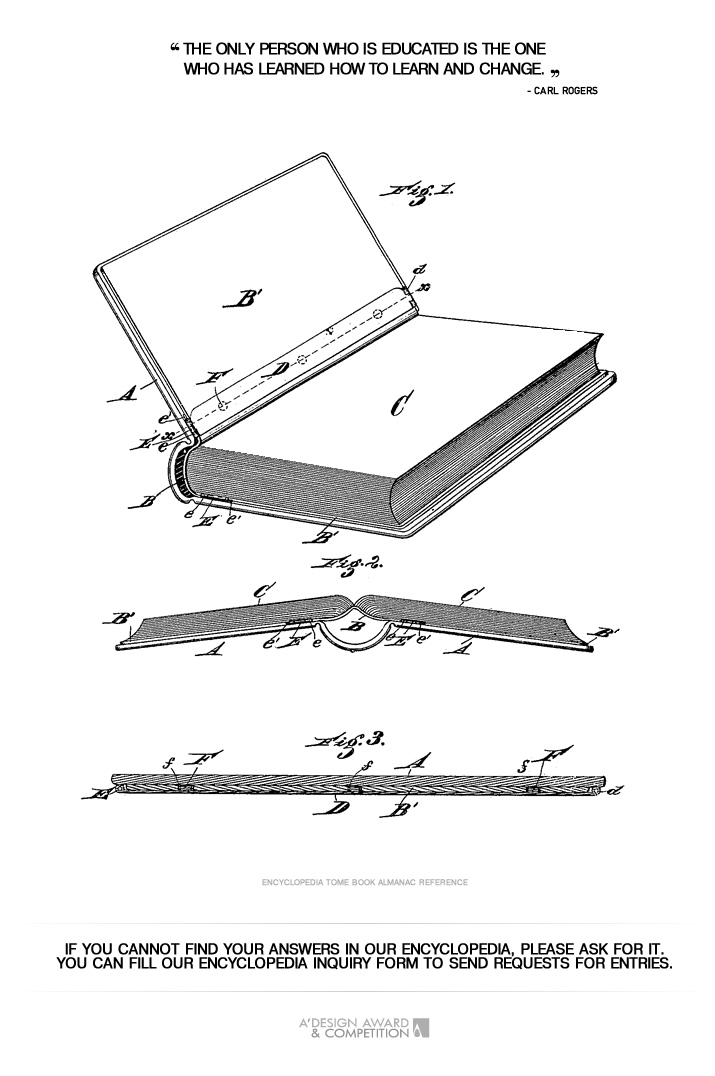
| THE AWARD |
| CATEGORIES |
| REGISTRATION |
| SUBMIT YOUR WORK |
| ENTRY INSTRUCTIONS |
| TERMS & CONDITIONS |
| PUBLICATIONS |
| DATES & FEES |
| METHODOLOGY |
| CONTACT |
| WINNERS |
| PRESS ROOM |
| GET INVOLVED |
| DESIGN PRIZE |
| DESIGN STORE |
| THE AWARD | JURY | CATEGORIES | REGISTRATION | PRESS | WINNERS | PUBLICATIONS | ENTRY INSTRUCTIONS |
Art In Outer Space And Extraterrestrial Environments - Entry #419499 |
Home > Design Encyclopedia > 419499 |
 Art In Outer Space And Extraterrestrial Environments
Art In Outer Space And Extraterrestrial Environments
Art in outer space and extraterrestrial environments refers to the creation of art in the context of space exploration and the potential for encountering extraterrestrial life. This field of art is relatively new, as space exploration has only been possible in the last century. However, it has already produced some fascinating works that reflect humanity's fascination with the cosmos and our place in it. One of the most notable examples of art in outer space is the Golden Record, which was included on the Voyager spacecrafts launched in 1977. The record contains sounds and images from Earth, including music, greetings in multiple languages, and images of our planet and its inhabitants. The Golden Record was intended to serve as a message to any extraterrestrial life that might encounter the spacecraft, and it represents a unique example of art created specifically for an extraterrestrial audience. Another example of art in outer space is the work of artist Trevor Paglen, who has created a series of sculptures that are designed to be launched into orbit. These sculptures are made of reflective materials and are intended to be visible from Earth, creating a new form of public art that can be seen from space. As space exploration continues to advance, it is likely that we will see more and more examples of art in outer space and extraterrestrial environments. This field of art represents a unique intersection of science, technology, and creativity, and it offers a fascinating glimpse into the human imagination and our relationship with the cosmos.
Author: David Harris
Keywords: space exploration, extraterrestrial life, Golden Record, Voyager spacecrafts, Trevor Paglen
 Art In Outer Space And Extraterrestrial Environments
Art In Outer Space And Extraterrestrial Environments
Art in outer space and extraterrestrial environments refers to works of art created and exhibited beyond the confines of Earth's atmosphere. This type of art is a relatively new field that has emerged from the advancements in space exploration technology, and it encompasses a wide range of creative expressions, including sculpture, painting, music, and performance art. Designing effective art pieces for outer space and extraterrestrial environments requires a deep understanding of the unique challenges posed by these environments. One of the critical criteria for designing art that will thrive in outer space is its ability to withstand the harsh conditions of this environment, including radiation, extreme temperatures, and a vacuum environment. A good example of space art is one that can withstand these conditions without losing its aesthetic appeal or function. Another crucial factor to consider when designing art for outer space is the impact of microgravity on the piece. Microgravity can alter the appearance and function of artwork, especially pieces with moving parts. Therefore, designers must consider the effects of microgravity and design pieces that can withstand them. Designers also need to think critically about the audience for space art. Since most people will experience space art through photographs and videos, the artwork must be designed to be visually and aesthetically appealing from a distance. It must be eye-catching and dynamic to capture the attention of viewers. Finally, designers must consider the scientific value of space art. Space art can be instrumental in promoting public interest in space exploration and imparting scientific knowledge. Thus, designs should be selected with this in mind, ensuring that they are not only visually appealing but also informative and educational.
Author: Paul Jackson
Keywords: Space art, Outer space, Microgravity, Aesthetics, Scientific value
 Art In Outer Space And Extraterrestrial Environments
Art In Outer Space And Extraterrestrial Environments
Art in outer space and extraterrestrial environments refers to any artwork that is created beyond the Earth's atmosphere or in simulated extraterrestrial environments. This form of art often involves collaborations between artists, scientists, and engineers to create works that are not only aesthetically pleasing but also challenge our perceptions of space and our place in the universe. Designing art for outer space requires careful consideration of the unique challenges that come with creating in zero gravity, extreme temperatures, and radiation exposure. Some criteria for good examples of art in outer space include: 1. Durability: The artwork must be able to withstand the harsh environment of outer space, as well as the vibrations and stresses that come with space travel. 2. Safety: Art installations must comply with strict safety regulations and not pose any hazards to the astronauts or equipment onboard. 3. Aesthetics: The artwork must be visually compelling and engaging, enhancing the astronauts' experience and providing a sense of connection to Earth. 4. Functionality: Art pieces can also serve a functional purpose in space, such as providing psychological benefits to the crew, or contributing to scientific research. 5. Innovation: The art installation should push the boundaries of what is possible in both art and science, inspiring future generations to explore new frontiers.
Author: Mark Lopez
Keywords: Art, Outer Space, Extraterrestrial, Collaborations, Zero Gravity
 Art In Outer Space And Extraterrestrial Environments
Art In Outer Space And Extraterrestrial Environments
Art in outer space and extraterrestrial environments refers to any artistic expression created beyond the Earth's atmosphere, in space or on other celestial bodies. It encompasses various forms of art, including visual arts, literature, music, and performance art, inspired by cosmic exploration and the mysteries of the universe. Designing art for extraterrestrial environments poses unique challenges and opportunities. The works meant for these spaces should be durable and able to withstand harsh conditions such as extreme temperatures, radiation, and zero gravity. They should also be capable of self-regeneration, given the limited resources available in these environments. They should be adaptive and responsive to changing environments, able to interact with their surroundings, and be modular or easily repairable. Additionally, art meant for space exploration should be lightweight and easy to transport. To create effective art for extraterrestrial environments, artists and designers should focus on form, function, and aesthetics. Designing art through these aspects can help to create a cohesive and visually impactful piece. Additionally, utilizing advanced technology, such as 3D printing, can aid in the creation of durable and adaptable works that incorporate sustainable materials.
Author: Joseph Jackson
Keywords: art in space, extraterrestrial art, space exploration, space art, cosmic art
 Art In Outer Space And Extraterrestrial Environments
Art In Outer Space And Extraterrestrial Environments
Art in outer space and extraterrestrial environments refers to any form of artistic expression that takes place beyond the Earth's atmosphere or in environments beyond our planet. This can include visual art, music, performance art, and other forms of creative expression. The concept of art in outer space has been explored by artists, scientists, and engineers alike, as it presents unique challenges and opportunities for creativity. One of the earliest examples of art in outer space was the placement of a ceramic disk on the Pioneer 10 spacecraft in 1972. The disk contained images and sounds representing Earth and its inhabitants, and was intended as a message to any extraterrestrial life that might encounter the spacecraft. Since then, artists have continued to explore the possibilities of creating art in space, including through collaborations with space agencies and private companies. One of the main challenges of creating art in outer space is the lack of gravity and the unique conditions of space environments. Artists must consider the effects of microgravity on their materials and equipment, as well as the limitations of working in confined spaces. However, these challenges also offer opportunities for innovative and experimental approaches to art-making. Art in outer space and extraterrestrial environments has the potential to inspire new perspectives on our place in the universe and to foster a deeper understanding of the cosmos. It also raises important questions about the role of art in scientific exploration and the relationship between art and technology.
Author: Jeffrey Davis
Keywords: outer space, extraterrestrial, artistic expression, creativity, microgravity
 Art In Outer Space And Extraterrestrial Environments
Art In Outer Space And Extraterrestrial Environments
Art in outer space and extraterrestrial environments refers to artistic creations that are produced beyond the Earth's atmosphere, or that are inspired by the exploration of space and the possibility of extraterrestrial life. This type of art can take many forms, including visual art, music, literature, and performance art. It often explores themes such as the human relationship with the cosmos, the search for meaning in the universe, and the impact of space exploration on human culture. One of the most famous examples of art in outer space is the Golden Record, which was included on the Voyager spacecraft launched in 1977. The record contains a selection of images, sounds, and music that were chosen to represent the diversity of life on Earth and to communicate with any extraterrestrial intelligence that might encounter the spacecraft. The record has been described as a work of art in its own right, and it represents a powerful expression of humanity's curiosity and creativity. Other examples of art in outer space include the works of artists who have been inspired by the beauty and mystery of the cosmos. Some artists have created installations that simulate the experience of being in space, while others have used space imagery and data to create abstract works that explore the nature of the universe. Still others have used space exploration as a metaphor for human experience, creating works that explore themes such as isolation, exploration, and the search for meaning. In recent years, there has been growing interest in the possibility of creating art in extraterrestrial environments. Some artists have proposed creating works that would be installed on the surface of the Moon or Mars, while others have suggested using robots to create art in space. While these ideas are still largely speculative, they represent an exciting new frontier for artistic exploration and expression.
Author: Brian Robinson
Keywords: art, outer space, extraterrestrial, Golden Record, creativity
 About the Design+Encyclopedia
About the Design+EncyclopediaThe Design+Encyclopedia is a crowd-sourced reference of information on design. Unlike other crowd-sourced publications on design, the Design Encyclopedia is edited and actively monitored and publishing is only possible after review of submitted texts. Furthermore, editors of the Design Encyclopedia are mostly consisting of award winning designers who have proven their expertise in their design respective fields. Information posted at design encyclopedia is copyrighted, you are not granted a right to use the text for any commercial reasons, attribution is required. If you wish to contribute to the design encyclopedia, please first register or login to A' Design Award and then start a new design encyclopedia entry.

If you did not find your answer, please feel free to check the design encyclopedia for more entries. Alternatively, you can register and type your own definition. Learn more about A' Design Award's Design+Encyclopedia.
